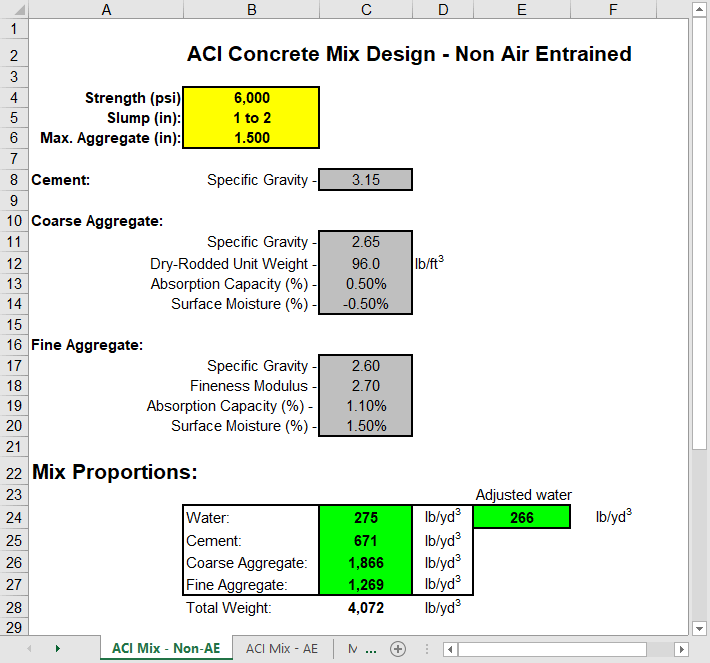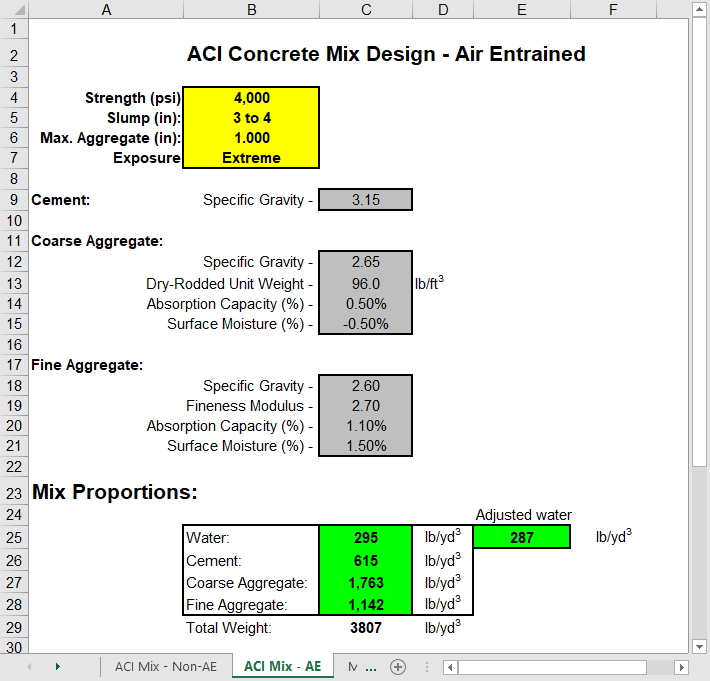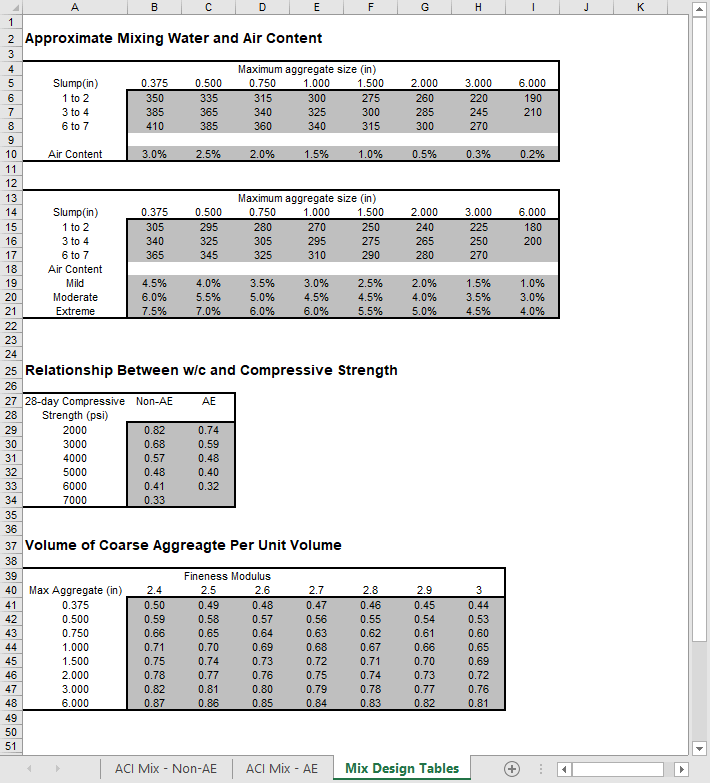|
"I am enough of an artist to draw freely upon my imagination. Imagination
is more important than knowledge. Knowledge is limited. Imagination encircles the world." - Albert Einstein (1879 - 1955)
Objective
This assignment aims to develop an analysis tool that will complement your
reinforced concrete beam design project and compute the cost-adjusted SWR from
the beam data collected in the first week of Project #2.
You must hand in the cover
sheet for the assignment, printouts of
your spreadsheet for Parts 1 and 2. Also, submit
your spreadsheets for Parts 1 and 2 to Canvas. You
must follow the Excel format.
Write a spreadsheet determining the mix proportion using the
ACI method
for non-air-entrained and air-entrained concrete. Write your spreadsheet so that
the user may enter values for the design variables (the maximum aggregate size,
the desired slump, and the 28-day compressive strength) and values for material
constants (for example, specific gravity, dry-rodded unit weight, absorption
capacity, and fineness modulus). Use the VLOOKUP function to
search the data tables by rows and the MATCH function to select
the appropriate column. Click here for the
Excel
lookup function notes.
The figures below show a typical spreadsheet layout for this problem.
Write your analysis including lookup functions, on one sheet, and store your table data on a
second sheet. The figure below shows a typical analysis sheet. Your spreadsheet may
look different if it provides the same input and parameter definitions.
The results should be reported in pounds per cubic yard. Click
here to download
a copy of the template for the
following spreadsheet.



Part 1. Compute the mix design for an interior column. The 28-day
compressive strength should be 6,000 psi. The slump should be between 1 and 2
inches, and the maximum aggregate size should not exceed 1.5 inches. The properties
of the materials are as follows:
-
Cement: Type I, specific gravity = 3.15
-
Coarse Aggregate: Bulk specific gravity (SSD)
= 2.70;
dry-rodded unit weight = 105 lb/ft3;
absorption capacity = 1.1%;
surface moisture = -0.5%
-
Fine Aggregate: Bulk specific gravity (SSD)
= 2.65;
fineness modulus = 2.70;
absorption capacity = 1.3%;
surface
moisture = 1.0%
Part 2. Compute the mix design for an exterior column
under extreme freeze-and-thaw conditions. The 28-day
compressive strength should be 4,000 psi. The slump should be between 3 and 4
inches, and the maximum aggregate size should not exceed 1 inch. The properties
of the materials are as follows:
-
Cement: Type I, specific gravity = 3.15
-
Coarse Aggregate: Bulk specific gravity (SSD)
= 2.72;
dry-rodded unit weight = 100 lb/ft3;
absorption capacity = 0.5%;
surface moisture = 0.5%
-
Fine Aggregate: Bulk specific gravity (SSD)
= 2.67;
fineness modulus = 2.70;
absorption capacity = 1.1%;
surface
moisture = 1.0%
Part 3. Read Chapters
11 and 12 in "A Mind for
Numbers" by Barbara Oakley.
A web page describing the CIVL 1112
Excel Homework
Policy is available. Please read it before you turn in each assignment this semester. You
will be graded according to the policy outlined in it.
Cover sheet for homework
This website was originally
developed by
Charles Camp for
CIVL
1112.
This site is maintained by the
Department of Civil Engineering
at the University of Memphis.
Your comments and questions are welcomed.
|



